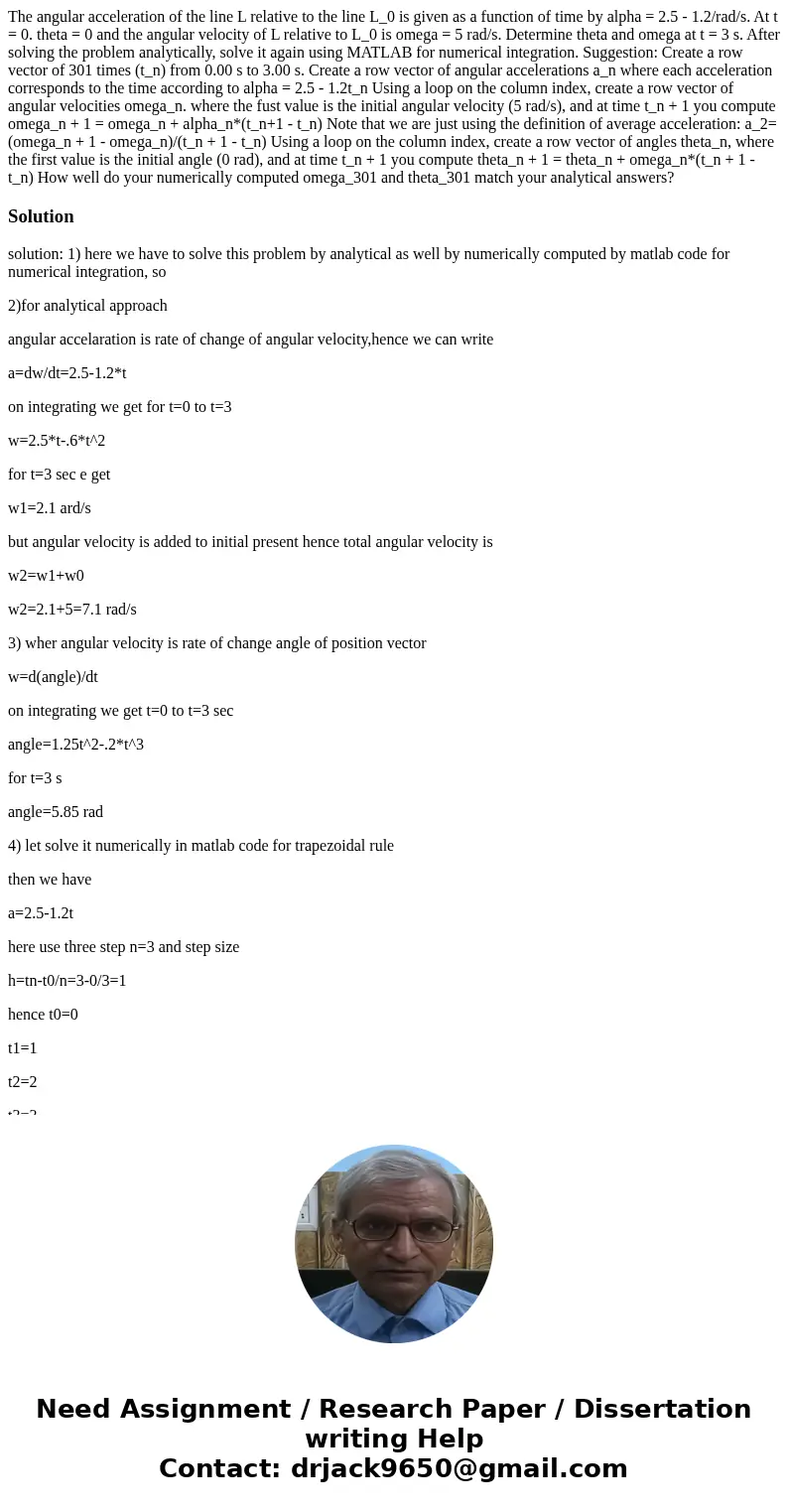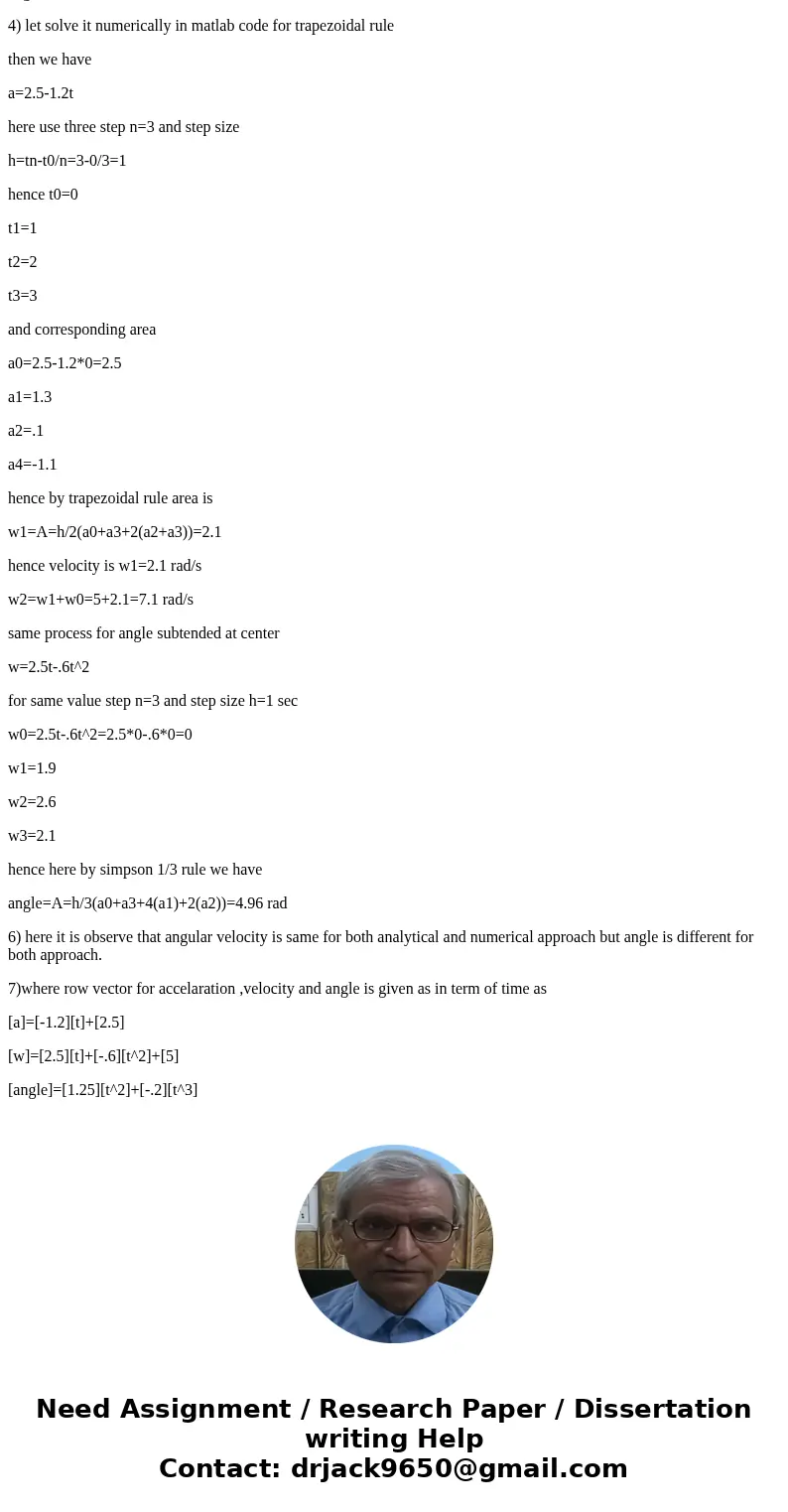The angular acceleration of the line L relative to the line
Solution
solution: 1) here we have to solve this problem by analytical as well by numerically computed by matlab code for numerical integration, so
2)for analytical approach
angular accelaration is rate of change of angular velocity,hence we can write
a=dw/dt=2.5-1.2*t
on integrating we get for t=0 to t=3
w=2.5*t-.6*t^2
for t=3 sec e get
w1=2.1 ard/s
but angular velocity is added to initial present hence total angular velocity is
w2=w1+w0
w2=2.1+5=7.1 rad/s
3) wher angular velocity is rate of change angle of position vector
w=d(angle)/dt
on integrating we get t=0 to t=3 sec
angle=1.25t^2-.2*t^3
for t=3 s
angle=5.85 rad
4) let solve it numerically in matlab code for trapezoidal rule
then we have
a=2.5-1.2t
here use three step n=3 and step size
h=tn-t0/n=3-0/3=1
hence t0=0
t1=1
t2=2
t3=3
and corresponding area
a0=2.5-1.2*0=2.5
a1=1.3
a2=.1
a4=-1.1
hence by trapezoidal rule area is
w1=A=h/2(a0+a3+2(a2+a3))=2.1
hence velocity is w1=2.1 rad/s
w2=w1+w0=5+2.1=7.1 rad/s
same process for angle subtended at center
w=2.5t-.6t^2
for same value step n=3 and step size h=1 sec
w0=2.5t-.6t^2=2.5*0-.6*0=0
w1=1.9
w2=2.6
w3=2.1
hence here by simpson 1/3 rule we have
angle=A=h/3(a0+a3+4(a1)+2(a2))=4.96 rad
6) here it is observe that angular velocity is same for both analytical and numerical approach but angle is different for both approach.
7)where row vector for accelaration ,velocity and angle is given as in term of time as
[a]=[-1.2][t]+[2.5]
[w]=[2.5][t]+[-.6][t^2]+[5]
[angle]=[1.25][t^2]+[-.2][t^3]


 Homework Sourse
Homework Sourse